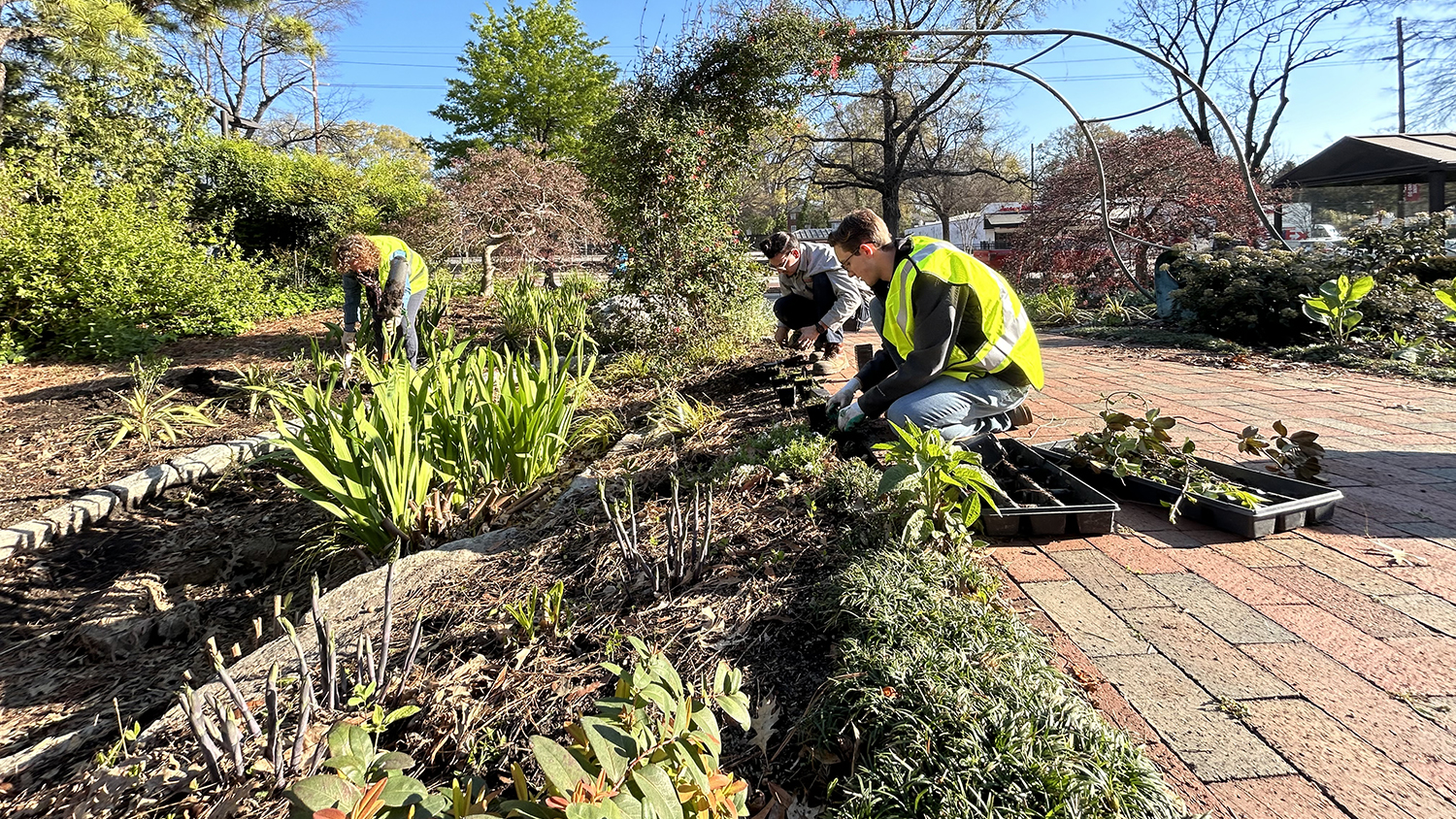Day two, dean's tour: MARC and CMAST
When: October 24
Where: Marine Aquaculture Research Center, Smyrna, and the Center for Marine Aquatic Science and Technology, Morehead City
You have to know where you’re going to reach the CALS Marine Aquaculture Research Center (MARC) in Smyrna, and for the recent open house and dean’s tour, quite a few folks did. MARC was a stop for the second day of Dean Richard Linton’s North Carolina tour, and more than 30 alumni, supporters and campus faculty were on hand for the event.
Linton told guests that only two days into his tour, he was already impressed by the passion of the College’s stakeholders and the passion of North Carolinians for moving agriculture forward. He also talked about N.C. State’s initiative to establish a new College of Sciences that will move some life sciences faculty from CALS.
As CALS makes this transition in July 2013, the College will embark on developing a new strategic plan, Linton said. “I will need your help,” he told supporters, “to help validate what we need to do as a college.”
Dr. Marc Turano, mariculture and blue crab specialist, gave Linton and the other guests an overview of work at MARC, where researchers are exploring issues related to raising saltwater species through aquaculture. The facility site is on Sleepy Creek, two miles from Marshallberg Harbor. Water for raising marine species in tanks is drawn from the creek, cleaned and then returned to the creek. This type of site is more economical for marine aquaculture than sought-after waterfront property.

MARC opened in 2010, with the help of a gift from Dr. I.J. and Sue Won of Williston. It is located on land owned by the Wons, and across the road, Won raises sturgeon in a large fish barn. The North Carolina Agricultural Foundation, the CALS fund-raising arm, is leasing the site from the Wons.
Turano and Ryan Kelly, extension assistant in charge of daily operations at MARC, took visitors on a tour of the facility. Visitors saw tanks where hybrid striped bass, striped bass, red porgy and mud minnows for bait are being raised. One research project involves exploring how different types of feed impact the growth of hybrid striped bass. Outdoor tanks hold wastewater that is cleaned of fish wastes, before it is discharged back into Sleepy Creek.
MARC is also the site of two alternative energy studies: A windmill turbine and solar array, developed with grant funds. Dr. Dave Eggleston, director of the Center for Marine Aquatic Science and Technology, said researchers are looking at data on how much energy can be produced by the two systems. They anticipate that with coastal winds of 12 mph per year, the wind turbine will be able to meet as least some of the energy needs for MARC.
Visitors also crossed the road to see the Wons’ sturgeon operation. Raised mostly for caviar, the sturgeon can reach sizes up to 12 feet long and 400 pounds. The Wons also want to learn how to differentiate the male sturgeons for the females in order to market the males for meat.
Center for Marine Sciences and Technology, Morehead City

Linton and others from CALS returned to Morehead City, where Dave Eggleston led a tour of the CMAST facility. CMAST, N.C. State’s coastal research and outreach facility, is located adjacent to Carteret Community College. The N.C. State center partners with the community college and other marine research agencies located in and around Morehead City, Eggleston said.
The facility includes researchers from N.C. State’s College of Agriculture and Life Sciences, Physical and Mathematical Sciences and Veterinary Medicine. Deans from the three colleges are among those who serve on the CMAST Advisory Committee.
On a sunny fall afternoon, the group walked around the outside of the facility to see a smaller demonstration wind turbine that could be used by homeowners to offset energy needs. They also saw a coastline restoration project, CMAST labs and graduate student offices.
N.C. Cooperative Extension’s Carteret County center is housed within CMAST. County Extension Director Ann Edwards told Linton that Extension has been helped promote local produce in the county through efforts like cooking classes to help teach citizens how to prepare local products.
Barry Nash, seafood marketing specialist, described efforts to help local fishermen market their products. “Carteret Catch” is a marketing initiative that brands seafood caught by Carteret fisherman. The model has been adopted by other North Carolina seafood markets, including Brunswick County and Ocracoke Island.
Dr. Dave Green, food safety specialist, described the College’s food safety training efforts through CMAST. Since 1970, the seafood lab has conducted training on post-harvest handling, HAACP food safety practices, and more recently, freshwater prawn packaging. As a fellow food scientist, Linton asked many questions about the food safety training initiatives.
Eggleston told Linton that one of CMAST’s biggest challenges is housing for visiting faculty and graduate students. The high demand for housing during the summer vacation season makes it difficult to find affordable housing. CMAST has plans to develop a guest house where faculty and grad students could live while working at the center.
-N.Hampton

- Dr. Marc Turano, left, shows off MARC’s alternative energy resources, including the solar array behind the visitors.


See a slide show with more photos from MARC and CMAST.


